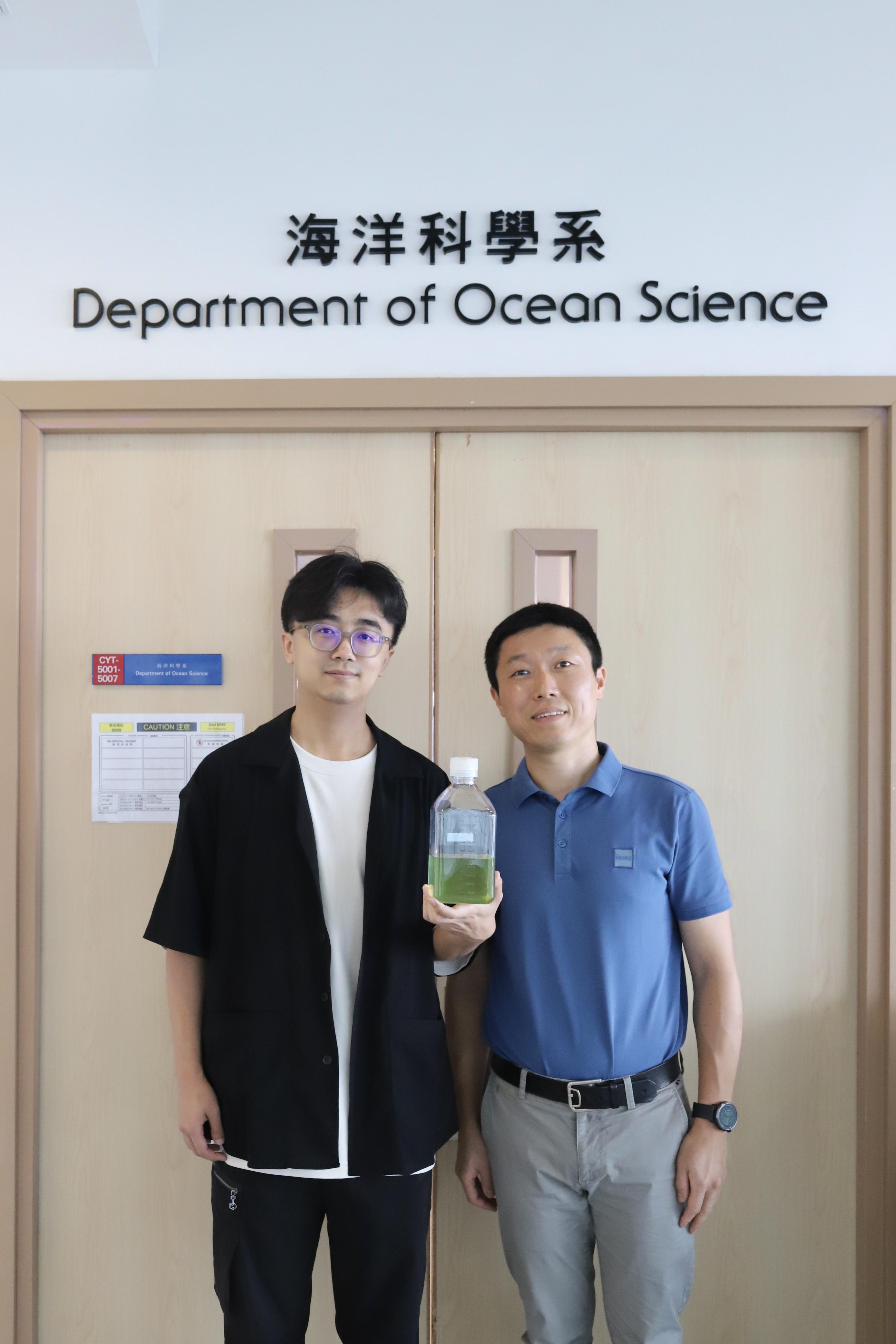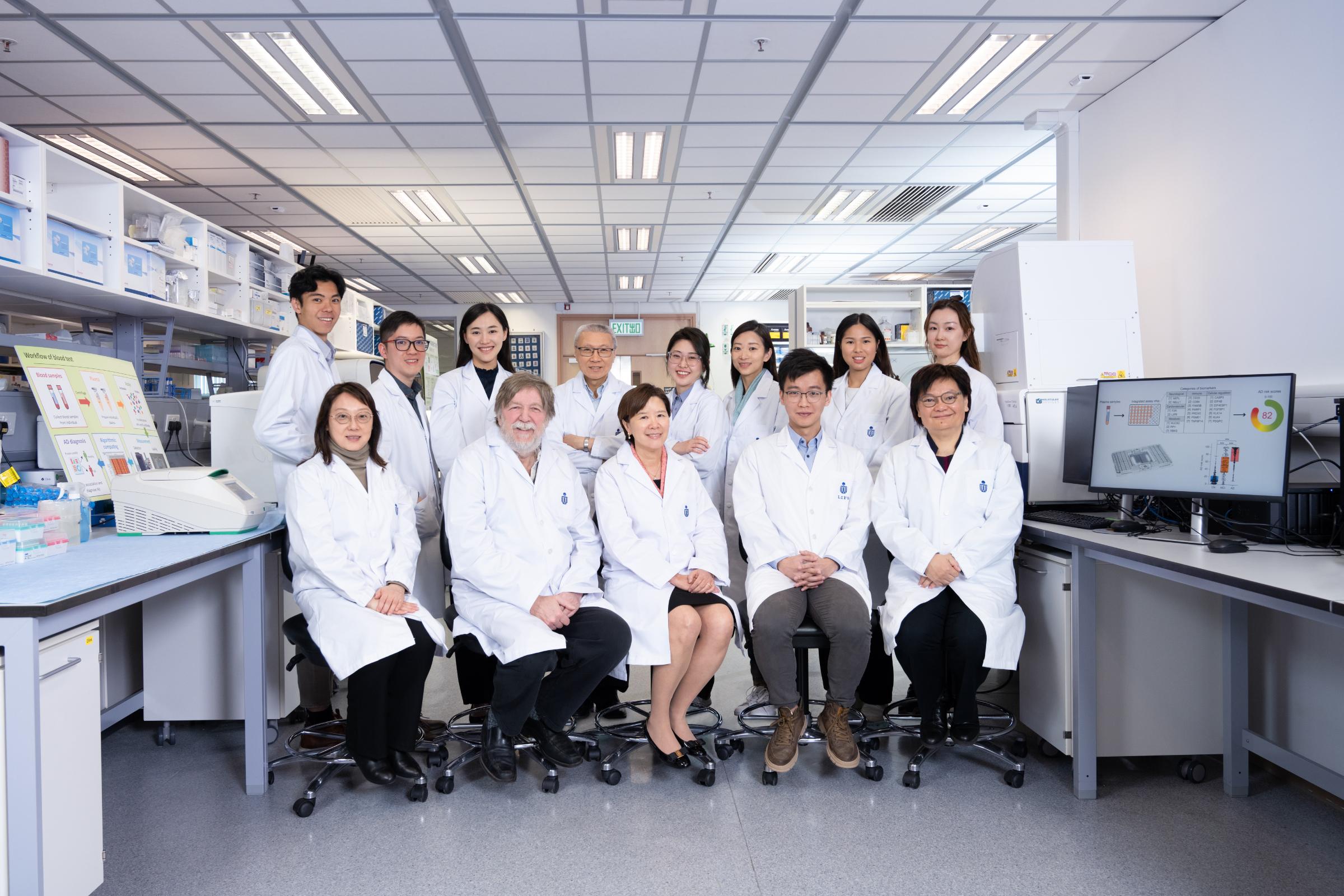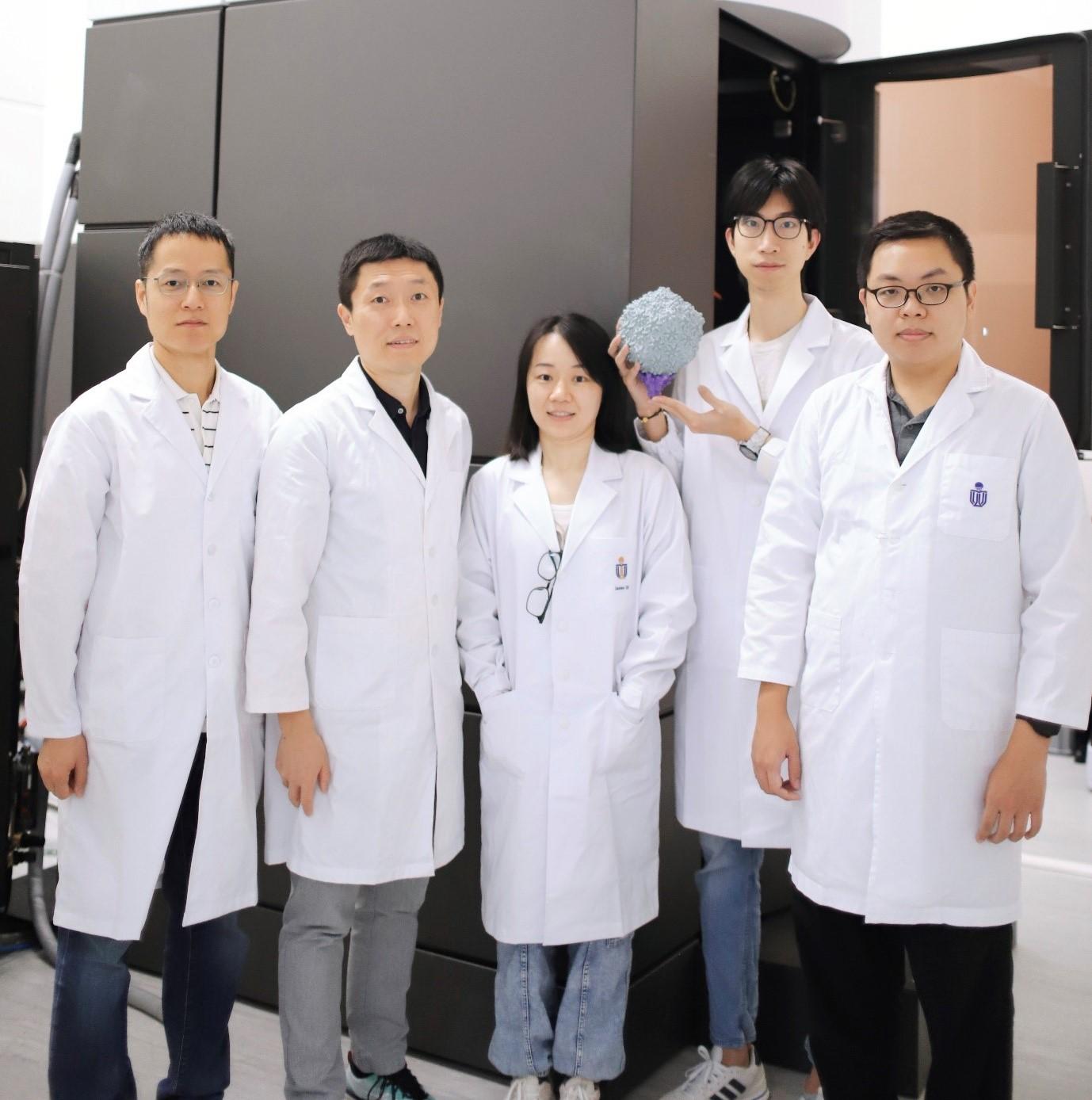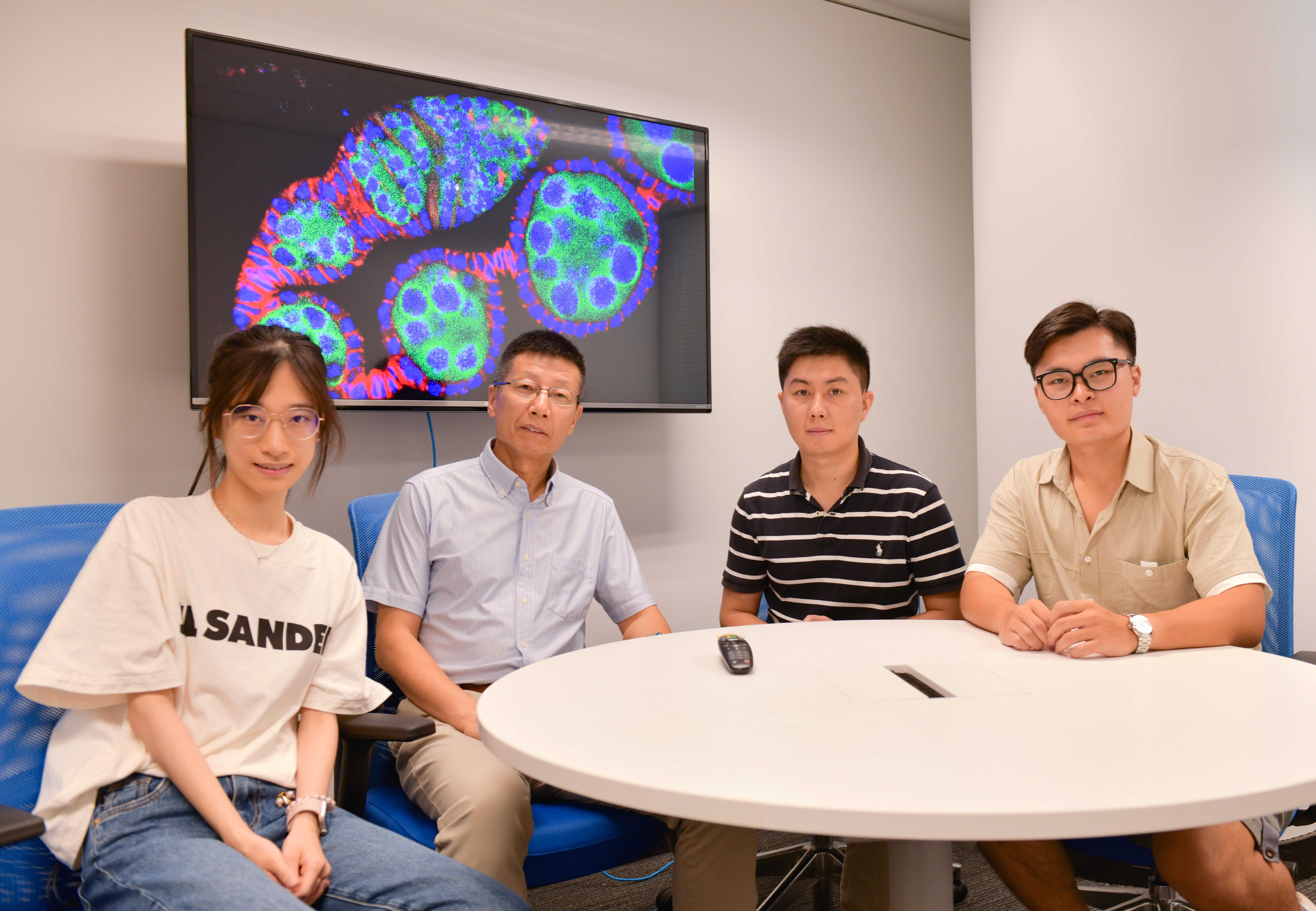

A research team led by Prof. GUO Yusong, Associate Professor of the Division of Life Science at the Hong Kong University of Science and Technology (HKUST), recently made a novel discovery related to the coronavirus (SARS-CoV-2) that causes COVID-19.


A groundbreaking method of detecting high-frequency gravitational waves (HFGWs) has been proposed by a research team led by Prof. Tao LIU, Associate Professor from the Department of Physics at the Hong Kong University of Science and Technology (HKUST). The team's innovative approach may enable the successful detection of HFGWs by utilizing existing and technologically feasible astronomical telescopes in planetary magnetosphere, opening up new possibilities for studying the early universe and violent cosmic events in an effective and technically viable way.


A research team led by the Hong Kong University of Science and Technology (HKUST) has discovered how carboxysomes, carbon-fixing structures found in some bacteria and algae, work. The breakthrough could help scientists redesign and repurpose the structures to enable plants to convert sunlight into more energy, paving the way for improved photosynthesis efficiency, potentially increasing the global food supply and mitigating global warming.


An HKUST-led international research collaboration has achieved a significant milestone in Alzheimer’s disease (AD) diagnosis and management. The team, spearheaded by Prof. Nancy IP, President and the Morningside Professor of Life Science at the Hong Kong University of Science and Technology (HKUST), and Director of the Hong Kong Center for Neurodegenerative Diseases (HKCeND), has developed a cutting-edge blood test for the early detection of AD and mild cognitive impairment (MCI), surpassing remarkable accuracy rates of over 96% and 87% respectively. Notably, this blood test is applicable across ethnic populations, providing a global solution to the diagnosis and management of AD.
An international research team led by the Hong Kong University of Science and Technology (HKUST) has achieved a significant breakthrough by developing an artificial intelligence (AI) model that can help mitigate global ammonia (NH3) emission from agriculture.


A research team led by The Hong Kong University of Science and Technology (HKUST) has developed an optical plasmonic tweezer-controlled Surface-Enhanced Raman Spectroscopy (SERS) platform that utilizes on-and-off control of light to probe various amylin species in mixtures at the single-molecule level, unveiling the hetergogerous structures of pH-dependent amylin species, and the secrets behind amyloid aggregation mechanisms associated with type 2 diabetes.


A research team at the Hong Kong University of Science and Technology (HKUST) has outlined the high-resolution structure of a little-known virus, improving our understanding of viral infection, which could pave the way for more accurate predictions of climate change.


A research team led by the Hong Kong University of Science and Technology (HKUST) recently revealed how TMED10, a type of transmembrane protein, regulates muscle stem cell differentiation through mediating the secretion of insulin-like growth factor 2 (IGF2). This provides potential therapeutic strategies to downregulate IGF2 signaling by inhibiting its secretion.
A research team led by Prof. Nancy IP, the President and The Morningside Professor of Life Science at The Hong Kong University of Science and Technology (HKUST), and the Director of the Hong Kong Center for Neurodegenerative Diseases (HKCeND), has identified VCAM1, a cell surface protein found on immune cells of the brain, as a therapeutic target for Alzheimer’s disease (AD), paving the way for developing novel therapeutics to combat this debilitating condition.


Researchers at the Hong Kong University of Science and Technology (HKUST) have found how stem cells’ surrounding environment controls them to differentiate into functional cells, a breakthrough critical for using stem cells to treat various human diseases in the future.